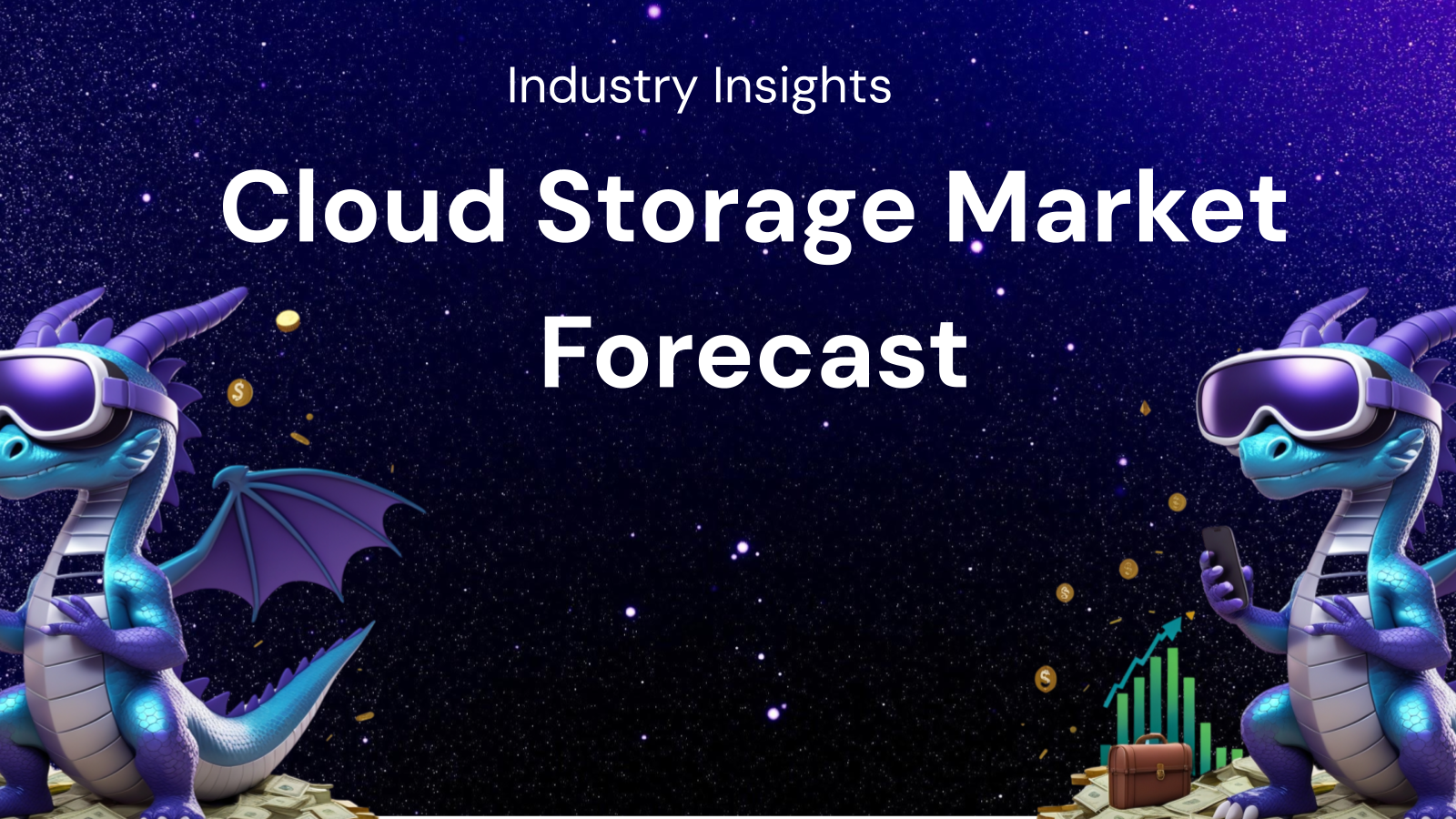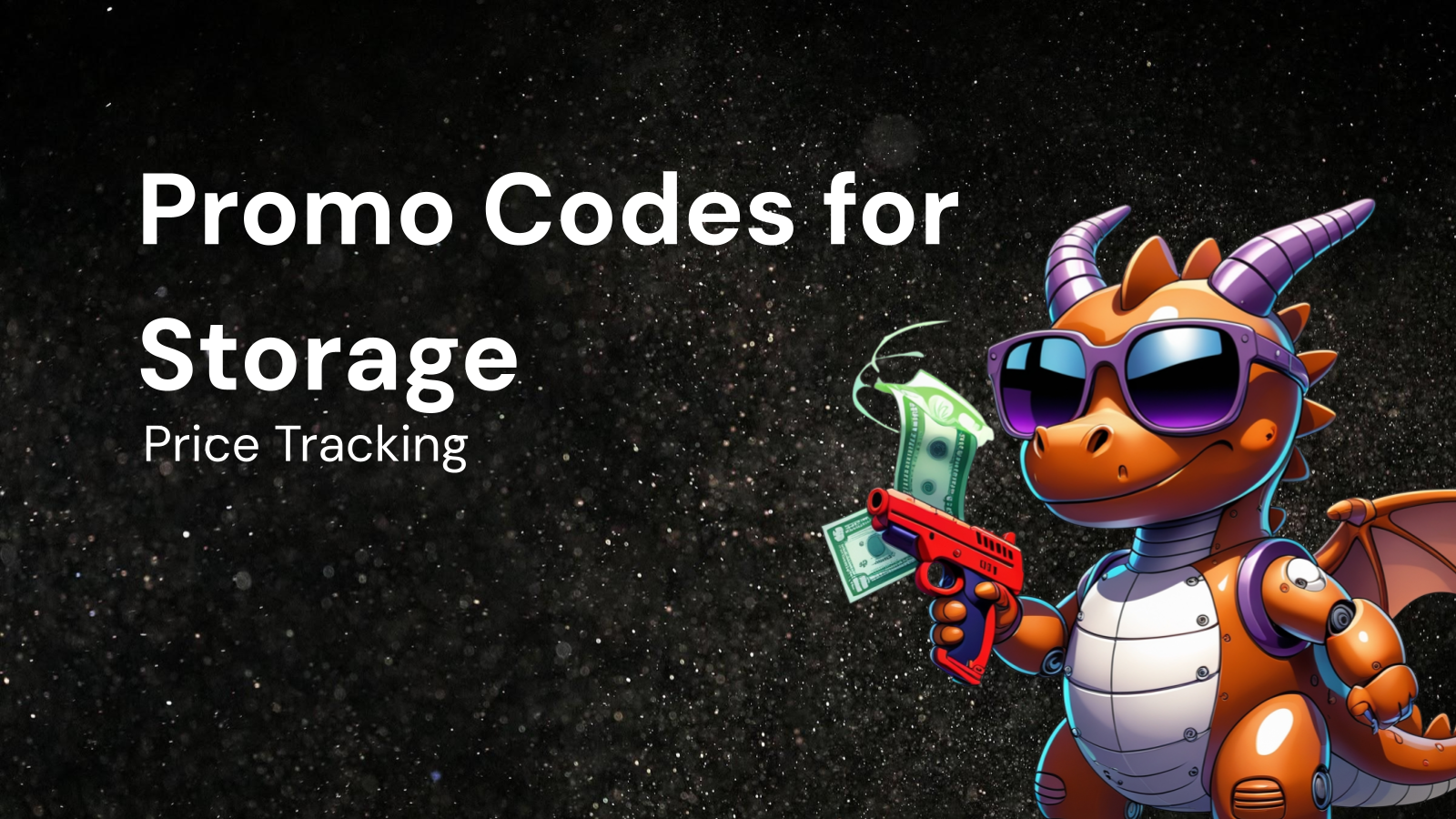When to Buy Cloud Storage for the Best Value

When to Buy Cloud Storage for the Best Value: A Comprehensive Guide
Cloud storage has become an indispensable tool for individuals and businesses alike. From safeguarding precious memories to streamlining business operations, its benefits are undeniable. However, navigating the world of cloud storage pricing and plans can be overwhelming. Knowing when to buy cloud storage can significantly impact the value you receive. This comprehensive guide explores the various factors to consider, helping you make informed decisions and maximize your investment in cloud storage.
I. Understanding Your Storage Needs: The Foundation of a Smart Purchase
Before diving into pricing and plans, a thorough assessment of your storage requirements is paramount. This involves evaluating not just how much storage you need, but also what kind of data you'll be storing and how frequently you'll be accessing it.
- Quantifying Your Data: The first step is to estimate the total amount of data you need to store. This includes documents, photos, videos, audio files, and any other digital assets.
- Individuals: Consider the size of your photo and video library, the number of documents you accumulate annually, and the size of any personal projects you might be working on. Regularly back up your devices (computers, phones, tablets) and factor that into your estimate.
- Businesses: Analyze the size of your databases, the volume of customer data you need to retain, the storage requirements for your software applications, and the amount of data generated by your employees.
- Future Growth: Crucially, don't just think about your current needs; project your storage requirements for the next 1-3 years. Consider factors like business expansion, increased data generation, and the evolving nature of your data storage needs (e.g., moving from primarily documents to more video content). Underestimating your needs can lead to frequent upgrades, which can be more expensive in the long run.
- Data Types and Usage Patterns: Different types of data have different access requirements. Understanding these requirements is key to choosing the right cloud storage tier and optimizing costs.
- Hot Storage (Frequently Accessed Data): This tier is ideal for data you need to access quickly and often. Examples include active projects, customer databases, and frequently used application data. Hot storage typically comes with higher performance but also a higher price tag.
- Cool Storage (Infrequently Accessed Data): This tier is suitable for data that you need to store long-term but don't access frequently. Examples include backups, archives, and older project files. Cool storage is generally more affordable than hot storage but has slower access times.
- Cold Storage (Archival Data): This tier is designed for data that you rarely need to access, such as compliance archives or historical records. Cold storage is the most cost-effective option, but retrieval times can be significantly longer.
- Example: A photography business might use hot storage for recent photos awaiting editing and delivery, cool storage for completed project archives, and cold storage for raw, unprocessed images they need to retain for legal reasons.
- Collaboration Needs: If you need to share files with others, consider the collaboration features offered by different cloud storage providers.
- Individuals: Sharing photos and videos with family and friends, collaborating on documents with classmates or colleagues.
- Businesses: Sharing project files with team members, collaborating on documents with clients, providing access to data for remote employees.
- Look for features like shared folders, permission controls, version history, and real-time collaboration capabilities. The number of users needing access will also impact your plan selection.
II. Understanding Cloud Storage Pricing Models
Cloud storage providers offer various pricing models, each with its own advantages and disadvantages. Understanding these models is crucial for determining when to buy.
- Pay-as-you-go: This model charges you only for the storage you actually use. It's a good option if your storage needs fluctuate significantly from month to month. However, it can be difficult to predict your costs in advance, and it may not be the most cost-effective option for consistent, high-volume storage.
- Subscription-based: This model offers a fixed amount of storage for a fixed monthly or annual fee. It's a good option if you have relatively stable storage needs and prefer predictable pricing. Subscription plans often come with additional features, such as collaboration tools and advanced security.
- Tiered Plans: Most subscription-based providers offer tiered plans with varying storage capacities and feature sets. Carefully compare the features offered at each tier to determine which plan best meets your needs.
- Reserved Capacity: This model allows you to reserve a specific amount of storage capacity in advance, often for a discounted price. It's a good option if you know you'll need a certain amount of storage long-term.
- Free Tiers: Many providers offer free tiers with limited storage capacity. These tiers are a great way to try out a service before committing to a paid plan. However, free tiers often come with restrictions on features and bandwidth.
- Hidden Costs: Be aware of potential hidden costs, such as:
- Bandwidth Overages: Most providers charge for bandwidth used to upload and download data. Exceeding your bandwidth limits can result in significant overage fees.
- API Requests: If you plan to use cloud storage programmatically, you may be charged for API requests.
- Data Retrieval Fees: Some providers charge fees for retrieving data from cold storage.
- Early Termination Fees: If you cancel a subscription before the end of the term, you may be charged an early termination fee.
III. Timing Your Purchase: Key Considerations
Now that you understand your storage needs and the different pricing models, let's explore the key factors to consider when timing your purchase for the best value.
- Promotional Periods: Cloud storage providers often run promotions, especially during holidays (Black Friday, Cyber Monday, end-of-year sales) or major industry events. These promotions can offer significant discounts on storage plans.
- Monitor Provider Websites and Newsletters: Sign up for email newsletters and follow cloud storage providers on social media to stay informed about upcoming promotions.
- Comparison Shopping: Don't settle for the first offer you see. Compare pricing and features from multiple providers to find the best deal.
- Consider Long-Term Value: While a discounted price is appealing, consider the long-term value of the plan. Does it offer the features you need? Is the provider reliable?
- Contract Length and Renewal Rates: Pay close attention to the contract length and renewal rates for subscription-based plans. Some providers offer lower introductory rates that increase significantly upon renewal.
- Read the Fine Print: Carefully review the terms and conditions of the plan before signing up. Look for clauses regarding renewal rates, price increases, and early termination fees.
- Negotiate Renewal Rates: If you're a valuable customer, you may be able to negotiate a better renewal rate when your contract is up for renewal.
- Consider Locking in Long-Term Rates: If you find a good deal on a long-term contract, it may be worth locking in the rate to protect yourself from future price increases.
- Existing Infrastructure and Integrations: Consider your existing IT infrastructure and the integrations you need. Some cloud storage providers integrate seamlessly with popular applications and services, saving you time and effort.
- Compatibility: Ensure that the cloud storage provider is compatible with your operating systems, devices, and applications.
- Integration Capabilities: Look for providers that offer native integrations with the tools you already use, such as Microsoft Office, Google Workspace, and Adobe Creative Cloud.
- API Availability: If you need to integrate cloud storage with custom applications, make sure the provider offers a robust API.
- Scalability and Flexibility: Choose a cloud storage provider that can scale to meet your growing needs. Look for plans that allow you to easily increase your storage capacity as your data grows.
- Upgrading and Downgrading Plans: Check the provider's policies for upgrading and downgrading plans. You should be able to easily adjust your storage capacity as your needs change.
- Pay-as-you-go Options: Even if you primarily use a subscription-based plan, consider a provider that also offers pay-as-you-go options for occasional bursts of storage usage.
- Data Security and Compliance: Data security and compliance are paramount, especially for businesses that handle sensitive information. Ensure that the cloud storage provider offers robust security measures and meets the relevant compliance standards.
- Encryption: Look for providers that offer encryption both in transit and at rest.
- Access Controls: Ensure that you can control who has access to your data.
- Compliance Certifications: If you need to comply with specific regulations (e.g., HIPAA, GDPR), make sure the provider has the necessary certifications.
- Data Residency: Consider where your data is stored. Some regulations require data to be stored within a specific geographic region.
- Seasonal Fluctuations: Certain industries experience seasonal fluctuations in storage needs. For example, retailers may need more storage during the holiday shopping season.
- Adjustable Plans: Choose a plan that allows you to easily adjust your storage capacity to accommodate seasonal peaks and valleys.
- Hybrid Approach: Consider a hybrid approach that combines on-premise storage with cloud storage to handle seasonal fluctuations.
- The Cost of Inaction: While searching for the best deal is important, don't let analysis paralysis prevent you from taking action. The cost of losing data due to inadequate backup or the inefficiencies of managing data across multiple locations can far outweigh the cost of cloud storage.
IV. Case Studies: Illustrative Scenarios
Let's examine a few case studies to illustrate how these principles can be applied in practice.
- Scenario 1: Small Business Startup
- Needs: Document storage, collaboration with a small team, basic data backup.
- Optimal Timing: Start with a free tier or a low-cost subscription plan to get started. Monitor usage closely and upgrade as needed. Take advantage of promotional offers during startup phase. Focus on providers with strong collaboration features and easy integration with productivity tools.
- Value Driver: Cost-effectiveness, ease of use, collaboration features.
- Scenario 2: Photography Enthusiast
- Needs: Large photo and video library, occasional sharing with friends and family.
- Optimal Timing: Purchase a subscription plan with sufficient storage capacity, ideally during a promotional period. Consider a provider with optimized photo and video storage features. Explore providers with lifetime deals, if available.
- Value Driver: Storage capacity, photo/video optimization, long-term cost savings.
- Scenario 3: Established Enterprise
- Needs: Large-scale data storage, stringent security requirements, compliance with industry regulations.
- Optimal Timing: Negotiate a custom pricing plan with a cloud storage provider that meets their specific requirements. Focus on providers with robust security measures, compliance certifications, and enterprise-grade features. Consider a reserved capacity model for predictable costs.
- Value Driver: Security, compliance, scalability, custom solutions.
V. Conclusion: Making the Informed Choice
Buying cloud storage for the best value requires careful planning and consideration. By understanding your storage needs, evaluating different pricing models, and timing your purchase strategically, you can maximize your investment and ensure that you're getting the most out of your cloud storage solution. Remember to factor in potential hidden costs, long-term scalability, and the importance of data security. By following the guidelines outlined in this comprehensive guide, you can confidently navigate the world of cloud storage and make the informed choice that best suits your needs. Don't just buy storage; buy a solution that empowers you to achieve your personal and professional goals.




Comments ()